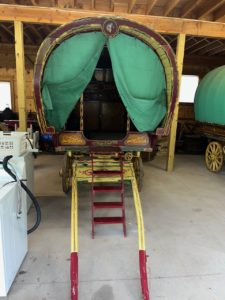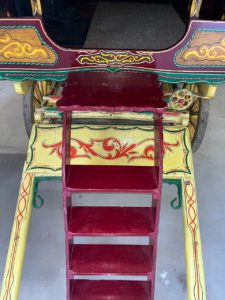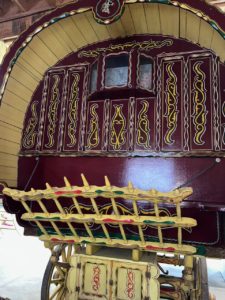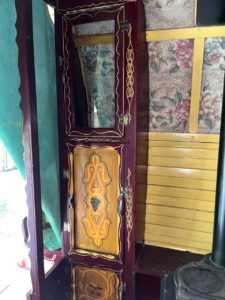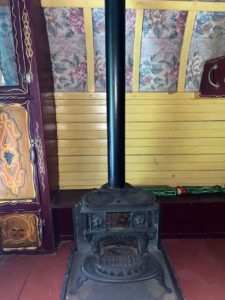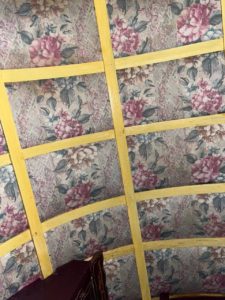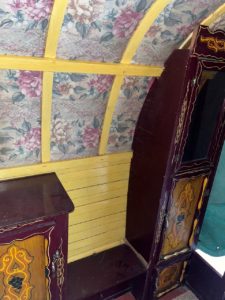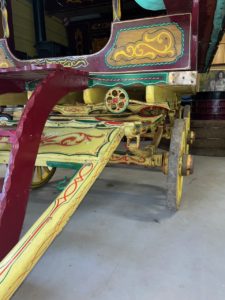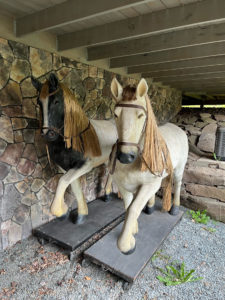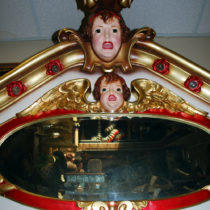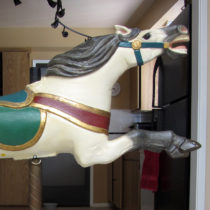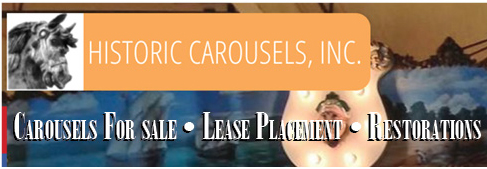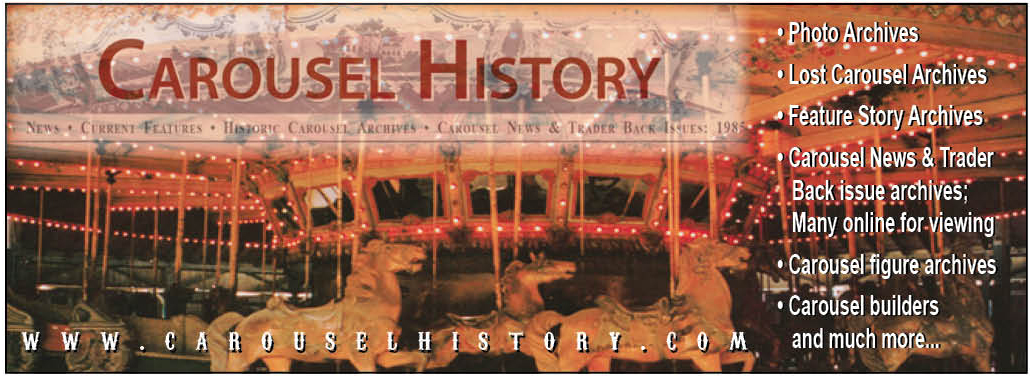Description
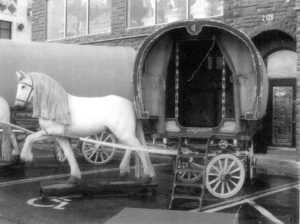 A Little About Gypsy Caravan (Wagons)
A Little About Gypsy Caravan (Wagons)
Gypsy caravan has been in existence since around the 1850s. They were and still are in a few cases, the home of gypsy families and usually referred to as wagons or vardos. Many of the wagons were “home” built, but for a period of time from around 1880, several dedicated wagon makers evolved. Andrew Depaolli has two Gypsy wagons dated back to the 1800s.
These individuals and companies were responsible for some of the most beautiful wagons ever built. Jim Berry, Fred Hill, Bill Wright and Dunton’s are but a few of the famous builders of that period. Wagons vary in basic design. One of the most famous styles of wagons was the “Bow-top”.
The Bow-top is just as it says, a wagon with a wood and canvas barrel-shaped roof. The Readings have solid sides rising up to a solid roof, usually with a ridge or skylights in. Within these two categories other variations arise. “No two wagons are the same”.
Inside a gypsy wagon a stove is often found on the left hand side as one enters. At the back at chest height is the bed which lies across the wagon. This pulls out on a runner to sleep two adults (or four children). There is voluminous cupboard space under the bed or more sleeping room. Dotted around are various drawers or cupboards between sitting space on the ledges.
In the design of a typical Bow-top wagon there is usually a window at the rest. Some had a stable-type door and “open-lots” have two a canvas type sheets across the door space with laced down the middle. The average size of a Bow-top caravan is about 10 feet long, 6 feet wide and just under 10 feet high from the ground to the top of the bow. Wheels can be wooden with a steel band or the early metal spoked type.
— Les Roberts



